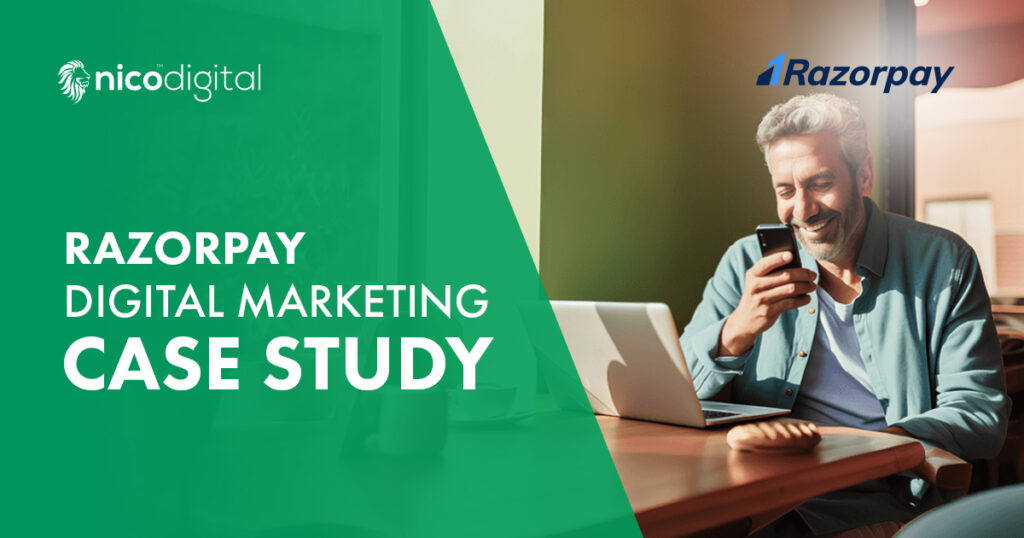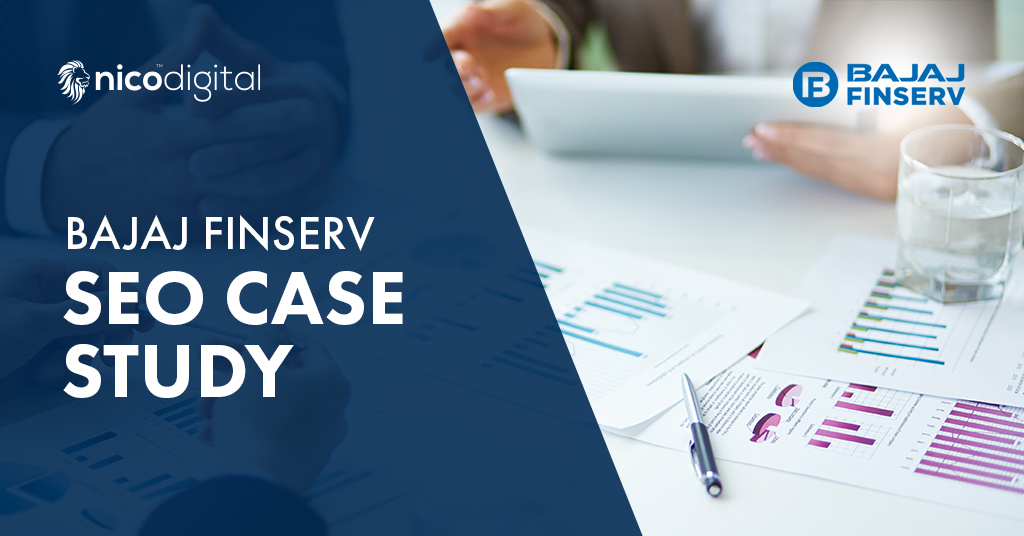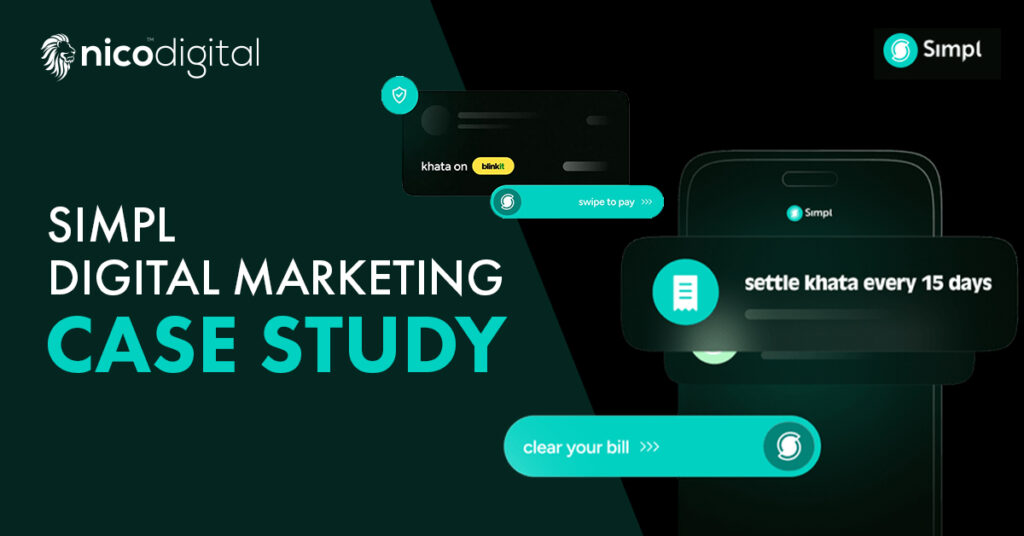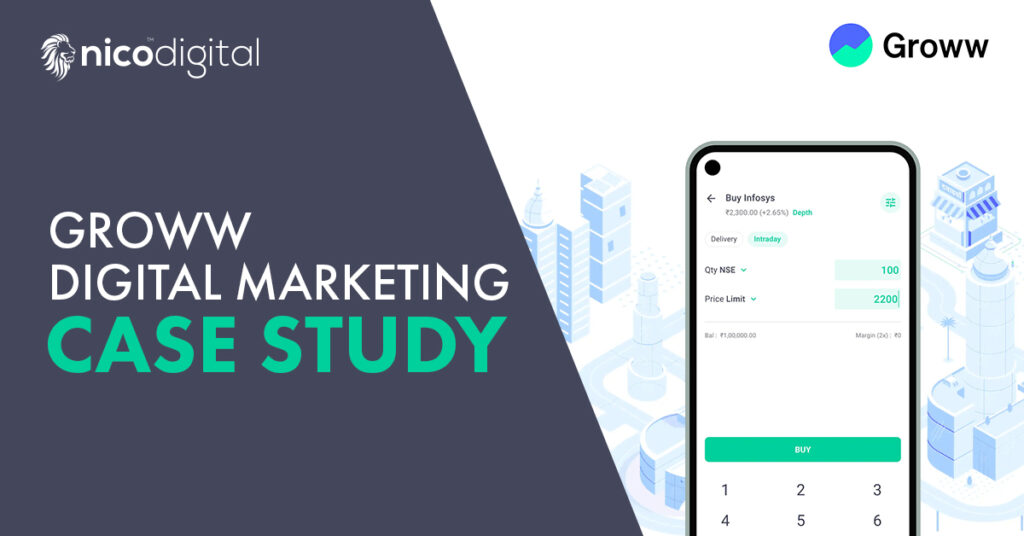
How an Google penalty recovery became my best ever growth hack!
Life is unfair sometimes. Setbacks come disguised as good things. You are hopeful, optimistic, and positive, and then boom! It hits you so hard that you begin to question everything that was going right.
And the same happened to me.
It started with a win…
It was a lazy Tuesday morning, and I was at my agency, in high spirits, planning my agenda for the week ahead, with my team. When suddenly, I got an email.
“Traffic is up 22% since last week. Whatever you’re doing, keep doing it!”
It was from one of my clients, a fintech startup making it big in the unlisted shares space. Let’s call them FinX, and they were seeing some steady organic growth, after months of us grinding over their SEO. They weren’t a household name yet, but they had solid offerings, and a decent website (thanks to us for delivering the best SEO services tailored for them).
The numbers were finally moving, and traffic was coming in. Everyone was excited. Life was good.
Until, it wasn’t.
The Penalty Bomb Drops
Remember how I said, life is unfair sometimes?
Well, sometimes it’s downright brutal. It gives you hope with one sudden burst of positivity, and then faster before you can blink, you are at the abyss. Stripped out of your peace.
48 hours later, on Thursday, I was sipping my third coffee in the afternoon. Impulsively, I decided to check the Google Search Console. For god knows what reason…maybe just pure intuition.
And the moment I logged in from my admin account, where the data of all my SEO clients are saved, and clicked on FinX’s tab, my wrist froze.
As an ecommerce SEO Company in India, I had seen setbacks before, but nothing prepared me for what showed up on the screen.
The notification glared back at me like a digital death sentence.
Manual Action: Unnatural Links to Your Site
Some of your pages may not be appearing on Google.

I stared…at the screen for a few more seconds. Hoping I wasn’t hallucinating.
Well, turns out, I wasn’t.
My stomach dropped. Hard.
The client had just been struck with a manual penalty. The worst kind of punishment Google can hand out.
Not an algorithm change. Not a traffic dip. It was a straight-up slap in the face.
A Google manual penalty is a ranking drop given by a human reviewer for guideline violations.
Apparently, someone at Google, a real human, had looked at FinX’s backlink profile, and deemed that it was spammy.
And it was my fault.
And overnight, their organic visibility, which was like the precious mana of the company, the very lifeblood of their lead gen, had plummeted by, wait for it.
Over 60%!!
I stared at the barrel of a potential loss of a monthly $30,000!
I slowly sipped the last drop of coffee from my cup, savoring a momentary bliss from the aroma, and the warmth of the cup. A moment of quiet bliss.
The calm before the storm.
What went wrong?
Something hit me.
Earlier in the month, we had published 3 offsite articles for the client with backlinks to the client’s site.
These were niche-relevant and were placed on clean websites. No spammy content, or dubious links in them.
But, they looked too unnatural. Like too perfect. Too “SEO-y!”
All three had:
- Exact-match anchor texts
- Commercial intent keywords
- Little to no content variation
And Google sniffed it out faster than I had expected.
Google penalizes excessive exact match anchor text as it signals manipulative link building. violations.
I panicked.
How the HELL do we fix it before the client notices their pipeline drying up?
48 Hours of Pure Panic
The term Pure Panic sounds like something Hollywood would make. Maybe starring Vin Diesel, or even Bruce Willis.
But here, I was having a Hollywood-style meltdown. Minus the explosions and soundtracks.
As an ecommerce SEO Company in India, we had faced algorithm updates before, but a manual penalty felt like staring into the abyss
Here’s what raced through my head….
- Do I tell the client immediately or try to fix it first?
- Are we going to lose the entire domain’s ranking?
- Is my contract going to get cancelled?
- Am I going to lose future referrals from this industry?
And then my world shrunk to just 3 screens. Google Search Console, the mighty Ahrefs, and a spreadsheet my team was rapidly filling with link data.
Here’s what we carried out in our frenzy.
1. The Autopsy
We started off with what any self-respecting SEO agency would do. We did a deep dive into FinX’s backlink profile. There were thousands of links. We sorted, filtered and then categorized them like mad scientists.
And then we found that there was more dirt than the 3 offsite articles we had published earlier. A legacy of old and low-quality directory links, some more questionable blog posts, and a handful of spammy profiles. The kind of junk that screams “penalty” to Google.
2. The vow to Disavow
The immediate textbook response to such low-quality and spammy links is to use Google’s disavow feature.
Google’s disavow tool lets you exclude harmful backlinks from ranking signals.
Thus, we carefully scrutinized and identified every sketchy link we could find, like hundreds of them. We then compiled the list, uploaded it via Google’s Disavow Tool.
And then we held our breath. This was just step one. The bare minimum.
3. The Reconsideration Request Prep
Man, Google sometimes feels like your 5th standard school teacher. Who caught you without your homework. And made you stand outside the class, as an example.
Google today demands more than just a disavow. They want a story, a confession, a remediation plan. And a promise to never do it again.
Thus, we drafted a detailed reconsideration request.
- Acknowledgment: “Yes, Google, we messed up.”
- Investigation: “Here’s exactly what we found: X spammy directories, Y low-quality guest posts, Z toxic forum links.”
- Action: “We’ve disavowed ALL of them (see attached file). We’ve also contacted Site A, B, and C (the slightly less awful ones) requesting removal.” (Btw, most ignored us).
- Prevention: “Here’s our new, ultra-strict link building policy. We only pursue high-quality, relevant, editorial links!”
And we finally submitted the reconsideration request.
Then came the worst part. The limbo. The wait.
Google gives ZERO timeline for their reconsideration requests. Like they can make you wait for days, weeks, and even months.
Every hour felt like an eternity. The client was starting to ask questions.
My reputation, (also, potentially my contract) was hanging by a thread.
When Life Gives You Lemons, You Make Goddamn Margaritas!
In my desperation, I was scrolling through hundreds of Google community help forums. Almost nearing brain rot, when I stumbled upon something, which at first, seemed insignificant.
However, the more I stared at it, the more intrigued I got.
In a help forum buried deep in Google support, someone mentioned that Google sometimes “refreshes” your site during reconsideration.
This essentially means that when you submit a request, Google doesn’t just look at what caused the penalty. They re-crawl your entire site.
And this got me thinking.
What if… I used the reconsideration process as an opportunity?
If Google was going to re-crawl my site anyway, why not optimize it better than ever?
I had this unique opportunity to have a human reviewer look at my site. Because then that reviewer will decide if my penalty should be lifted or not.
Most people see the Google Reconsideration Request as just another “Chore”. A step that needs to be taken to undo damage.
I saw this….as an opportunity….a LOOPHOLE!
The “FIX” Became a Strategy
I withdrew my reconsideration request.
This is exactly where the “loophole” comes into play. And it’s not about tricking Google.
It’s about making the most out of the unique access you have.
And here’s what we started doing differently, in the new reconsideration request page I clicked, fuelled by a sudden surge of motivation.
1. Not just cleanup, we showcased quality
Instead of just removing the bad links we had disavowed, we also dedicated a significant section of our request to highlight the positive actions we had taken, which was independent of the penalty we faced.
- Content Overhaul: We audited and also significantly improved 15 cornerstone articles on core financial topics (links provided), adding depth, updating statistics, and improving the user experience (before/after screenshots attached).
- Technical Wins: We fixed critical site speed issues identified via Core Web Vitals and reducing LCP by 40% on key landing pages (data attached).
LCP (Largest Contentful Paint) tracks how long it takes for the primary content on a page to fully load.
- E-A-T Reinforcement: We have also featured author bios with credentials for all our expert contributors and added detailed ‘About Us’ and ‘Editorial Process’ pages.
- Link Building: “Here are 5 examples of recent and high-authority, editorially-placed links we’ve earned through outreach and content quality (links provided). This represents our ongoing commitment to white-hat practices.”
I was grinning as I typed this into the reconsideration request form. Can’t believe I just said this, after having received a penalty for low links. A bit rich innit?
2. Framing the Narrative
Sometimes in life, you just have to use the right choice of words to make people actually listen to you.
We didn’t just say “We fixed the bad stuff.” We said, “We fixed the legacy issues , and we’ve been proactively building a best-in-class resource worthy of ranking highly. The penalty is holding back genuinely helpful content.”
We positioned the site as a victim of past mistakes, which was now transformed into a knowledge house of content, which readers from the financial niche will find helpful.
3. Making it Easy for the Reviewer
We structured the document logically. We used clear headings, and included direct links to the improved pages, the new author bios, and the technical fixes (we rewrote meta titles and descriptions, fixed internal linkings and removed 404s).
We didn’t make them hunt. We spoon-fed them the evidence of quality.
4. The Psychological Nudge
See what we did over here? We did not just cleanup the main reason for the penalty. Which would have been just the bare minimum. We signaled a deep commitment to Google’s guidelines.
It made the reviewer want to see us succeed. It transformed the request from “Please remove this penalty” to “Look at all this great stuff we’re doing. Don’t you want to rank this?”
I submitted the reconsideration request. Again.
And waited.
The Wait and The Miracle
Life is unfair. But just for some time.
The wait felt even heavier this time. I was also starting to question myself.
Had I wasted precious time just adding fluff to the request?
Was I being naïve?
10 days later, I got an email.
“We reviewed your site and found that the manual action we took is now revoked. We’ll automatically recrawl your pages as necessary. It can take time for our recrawling and reprocessing to reflect changes to your site’s status”
Relief washed over me! The penalty was gone!
But, the real story was just beginning!
The Crazy Results: +42% Organic Traffic!
We prepared ourselves for the traffic to slowly return. That would have been a big win!
What happened instead blew our minds.
- The Rebound: Within 48 hours, traffic started ticking up. Fast.
- Overshooting the Mark: Within a week, traffic wasn’t just back. It had surpassed pre-penalty levels by 15%.
- The 42% Miracle: By the end of the month, organic traffic was up a staggering 42% compared to the month before the penalty hit. Not just recovered. Supercharged.
- Keyword Explosion: Rankings didn’t just return. They improved dramatically for key terms. Pages we had specifically highlighted in our reconsideration request saw the biggest jumps. New, relevant keywords started ranking that we hadn’t even targeted.
I thought it was a fluke. It wasn’t.
What I had accidentally discovered was a powerful reset mechanism.
The reconsideration request worked as a hard refresh for Google to review the site from scratch!
And since the site was in great shape at the time of review, Google rewarded it.
We celebrated. The client was more than happy.
Why This Worked (And How You Can Replicate It)
Let me break down why this happened and how you can use the same concept. Without getting penalised.
1. Reconsideration Requests Trigger Deep Reviews
Google doesn’t just peek. They evaluate your site holistically during reconsideration. If they see quality, freshness, and signals of trust, then they give your site more love.
2. Google’s Memory Is Short, If You Fix Fast
The faster you clean up and improve, the more likely Google is to forgive. I submitted my request within 72 hours of the penalty, and I believe that played a role.
3. Google Loves Clean Slates
When you show that you’ve “learned your lesson” and improved your site, Google often responds positively. You could think of it like getting a fresh start.
4. The Algorithmic Ripple Effect
The human reviewer lifting the penalty on your site is one thing. However, the signals that improved our site, like faster speed, better content, stronger EEAT, and clean links, were all that Google love. And the penalty removal just kind of unleashed these positive signals to work their magic.
We gave signals from the website that we had essentially done everything Google loved. And this turned out to be a big win for us.
Key Signals Google Uses to Rank a Site

Content Quality
Original, helpful, and relevant
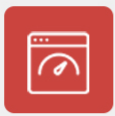
Page Speed
Fast loading on all devices

User Experience
Easy navigation, low bounce rate

Backlinks
From trusted, relevant sources

Mobile-Friendliness
Fully responsive design

E-E-A-T
- • Experience • Expertise
- • Authoritativeness • Trustworthiness
How You Can Use This Ethically (Without the Panic)
Now, if your site is doing poorly, or just getting around, you don’t have to wait for a penalty to get this boost.
Here’s how you can simulate the same process.
Step 1: Pretend You Got Penalized
Audit your site like you were under manual review.
Ask:
- Are my backlinks natural?
- Is my content helpful or just keyword-stuffed?
- Do I provide value, or just try to rank?
Step 2: Do a Deep SEO Refresh
- Re-optimize your top pages
- Fix all internal linking issues
- Improve page speed and UX
- Add E-E-A-T elements: authorship, sources, trust signals
Step 3: Submit a Fresh Reconsideration (If Needed)
If you’ve ever had a manual action, like even one from years ago, then you can submit a reconsideration request after your improvements.
But even if you haven’t, Google still notices massive changes during routine crawls.
Here’s an easy-to-understand infographic that will help you tackle Google penalties like a pro.
Step 1: Audit Like You’re Penalised
Step 2: Refresh SEO
Step 3: Submit If Needed
So once you improve everything, take the help of the best SEO services, start publishing consistently and also build clean links.
Lesson: The Worst SEO Disasters Are Hidden Opportunities
That $30,000 penalty nearly broke the relationship with my client.
But in the end, it forced me to do the kind of deep, painful optimization I’d been putting off for weeks.
It pushed me to:
- Think deeper about Google’s psychology
- Refocus on user value instead of shortcuts
- Build authority the right way
And that became a long-term competitive advantage.
If you’ve been hit with a penalty, algorithm drop, or sudden ranking loss, don’t panic.
Use it as fuel.
Because here’s what I’ve learned.
The difference between a penalty and a growth hack is how fast you react.
Your next big traffic jump could be hidden inside your biggest SEO disaster.
I now know mine was.
Ready to turn your SEO setbacks into success stories?
At Nico Digital, we don’t just fix problems, we find opportunities in them. From being trusted as one of the best SEO services providers to acting as a reliable ecommerce SEO company in India, we make setbacks work for growth.
Let’s grow smarter, faster, and stronger, TOGETHER.
Talk to us today and let’s make Google work for you.






